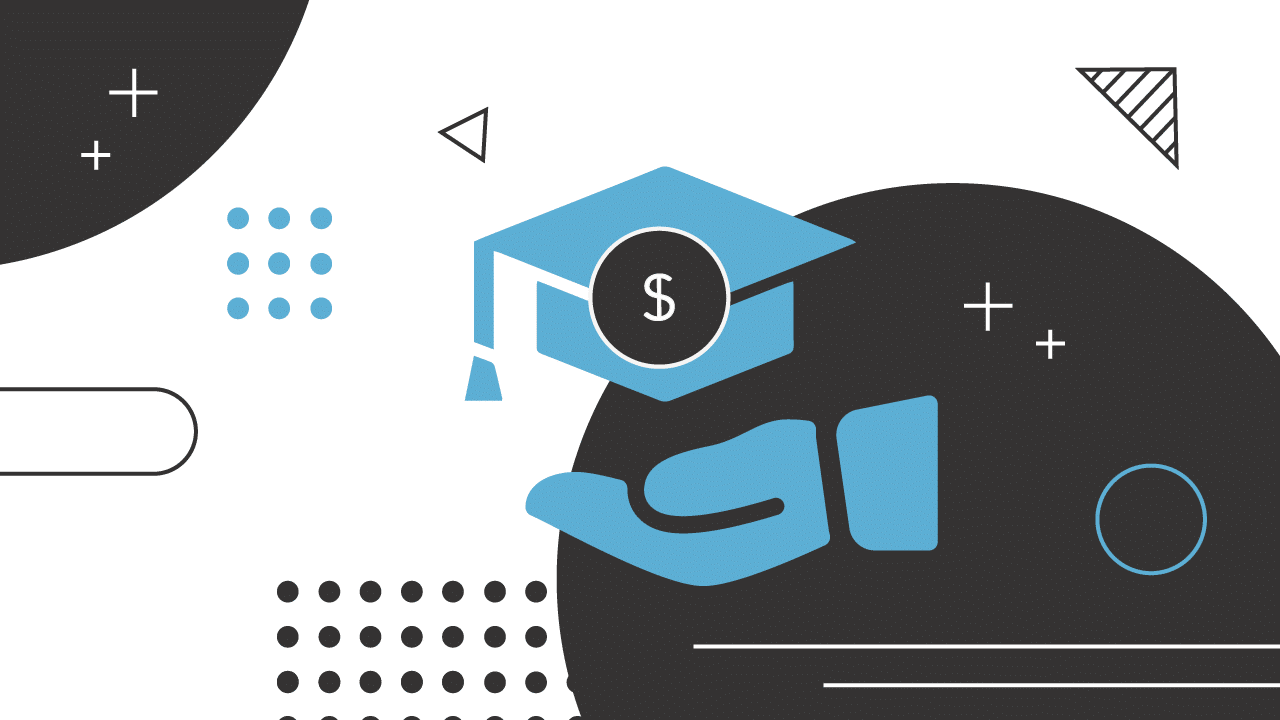
Source: The College Investor
The Biden administration published a new regulatory proposal for student loan forgiveness for borrowers who experience financial hardship on October 31, 2024. There is a 30-day public comment period which ends on December 2, 2024. The final rule probably won’t be published until early 2025.
This proposal is likely to be met with legal challenges based on the Administrative Procedures Act (APA) and the lack of specific operational criteria for forgiving loans.
Here's what to know about the a latest student loan forgiveness proposal for borrowers facing financial hardship.
Would you like to save this?
Details: Financial Hardship Student Loan Forgiveness
This Notice of Proposed Rulemaking (NPRM) is the same as the proposal that came out of the negotiated rulemaking committee on February 22-23, 2024, since the committee reached consensus on the proposed language.
The NPRM provides two pathways for financial relief, one automatic and one involving an application. The automatic method will provide one-time relief, while the application pathway provides ongoing relief.
Automated Pathway For Forgiveness
The automatic pathway would use a “predictive assessment” based on 17 factors to determine that a borrower’s loans “are at least 80 percent likely to be in default in the next two years after October 31, 2024.”
This may exclude borrowers who recently graduated from or dropped out of college, since it takes nearly a year of nonpayment after a 6-month grace period for a borrower to default on their student loans.
The 17 factors include:
Assets
Types Of Student Loans And Total Outstanding Loan Balance
Ratio of Monthly Student Loan Payments To Household Income (Student Loan Debt-to-Income Ratio)
Current Repayment Status and Other Repayment History Information
Prior Receipt of a Federal Pell Grant and Other FAFSA Data
Type and Level Of College Attended
Typical Outcomes Associated With The Program Attended By The Student
Whether The Student Completed The Program For Which The Federal Student Loan Was Borrowed
Borrower's Age
Borrower's Disability
Number Of Years In Repayment
Receipt Of Means-Tested Public Benefits
High-Cost Burdens For Essential Expenses (Healthcare, Dependent Care, Housing)
The Extent To Which Hardship Is Likely To Persist
Any Other Indicators of Hardship Identified By the U.S. Department of Education
The proposed model also includes year of loan disbursement, interest rates, adjusted gross income (AGI) and EFC from the borrower’s first FAFSA, parent education level, and borrower dependency status, among other variables.
The U.S. Department of Education has estimated that at least two-thirds of eligible borrowers are Pell Grant recipients.
Application Pathway
The application for forgiveness will involve a holistic assessment that the borrower has severe negative and persistent circumstances “such that the hardship is likely to impair the borrower's ability to fully repay the Federal government or the costs of enforcing the full amount of the debt are not justified by the expected benefits of continued collection of the entire debt.”
If no other payment relief option exists sufficient to address the permanent hardship, the U.S. Department of Education will waive the loan.
The NPRM offers elderly borrowers who have been in repayment for decades as an example:
“Forty-one percent of non-Parent PLUS borrowers 62 years of age and older with an open loan have held their student loans for more than 20 years, and 30 percent of borrowers 62 years of age and older with an open loan have held their student loans for more than 25 years. Waiving such loans would not create significant costs for the Government in the form of transfers because the Department is unlikely to receive significant additional payments from a retired borrower.”
The draft regulations also propose to provide full or partial forgiveness when the "borrower experiences an unanticipated expense — such as medical bills, high childcare costs, caring for loved ones with chronic illnesses, or natural disaster — that could impair their ability to fully repay the loan." It gives as an example a chronic health condition for a dependent that costs more than 7.5% of adjusted gross income (AGI).
But, the draft regulations do not identify specific circumstances that warrant relief, instead leaving it to the U.S. Department of Education’s discretion after a holistic review of the borrower’s circumstances.
Potential Impact
According to the U.S. Department of Education, the proposal will provide financial relief to nearly 8 million borrowers, or about a fifth of the total number of borrowers with outstanding student loan debt.
The U.S. Department of Education has estimated the forgiveness as costing $112 billion over 10 years. The Committee for Responsible Federal Budget has published a higher estimate as high as $600 billion.
There may be some partially offsetting savings from no longer attempting to collect uncollectable loans, but there will also be a cost associated with reviewing applications for forgiveness.
The U.S. Department of Education has stated a goal of reducing the 1 million new defaults each year. But, eliminating the loans doesn’t address the underlying problem.
Likely Legal Challenges To The Plan
There will likely be legal challenges against the proposed regulations when the final rule is published in the Federal Register. The basis for the legal challenges will likely include the Administrative Procedures Act (APA). The APA bans regulations that are “arbitrary, capricious, an abuse of discretion, or otherwise not in accordance with law” [5 USC 706(2)(A)] or which are “in excess of statutory jurisdiction, authority, or limitations, or short of statutory right.” [5 USC 706(2)(C)]
In the aftermath of the U.S. Supreme Court’s invalidating the Chevron test in Loper Bright Enterprises v. Secretary of Commerce, the courts no longer grant deference to federal agencies in interpreting the law.
A key problem with the NPRM is that it is vague and potentially in conflict with other statutory requirements.
The draft regulation does not provide any specific details concerning how the U.S. Department of Education will determine that a borrower “is experiencing or has experienced hardship related to the loan” other than through a set of 17 broad factors that could encompass all borrowers.
The draft regulations refer to a predictive model, but do not specify the details of this model, nor any other specific objective criteria. For example, while it refers to a debt-to-income ratio, it does not establish the specific debt-to-income threshold that will qualify for forgiveness.
Similarly, while it refers to persistent hardship, it does not define what qualifies as persistent. Is it two years? Five years? Seven years? Ten years? Indefinite?
The 80% likelihood is a rather weak probability threshold. It is similar to the probability that a coin toss will yield heads twice in a row.
The draft regulations may also conflict with statutory provisions concerning default aversion and enforced collection of defaulted federal student loans. After all, if the regulations will forgive the student loan debt of borrowers who are highly likely to be in default, it will likely include all borrowers who are already in default and render moot existing statutory requirements concerning default aversion and default collection.
The U.S. Department of Education claims that the statutory waiver authority in Part B of the Higher Education Act of 1965 [20 USC 1082(a)] provides it with the authority to implement these regulations. That is the same authority claimed as the basis for a previous NPRM published on April 17, 2024 that would establish a broad set of targeted relief measures.
The legal challenges against that NPRM likely will also apply to the new NPRM.
Possible Fixes To Prevent Legal Challenges
Forgiveness for persistent economic hardship could be reasonable in several circumstances. However, the vagueness of the current language poses a problem.
Specific guidelines could be created to define financial hardship that could qualify for loan forgiveness, such as:
When the borrower’s age, disability and health will prevent the borrower from repaying the debt. When a borrower reaches normal retirement age, their income decreases significantly. The offset of up to 15% of Social Security retirement and disability benefit payments is a morally bankrupt policy.
When a borrower has been in default for a very long time, with no progress towards paying off the debt, the potential recoveries do not justify the cost of attempting to collect the debt.
When calculating a borrower’s ability to pay, income should be reduced by the amount of high ongoing medical and disability-related expenses of the borrower and the borrower’s dependents.
A five-year definition for persistent hardship would be consistent with the requirements for a Total and Permanent Disability (TPD) discharge.
Debt-to-income ratios that are similar to the thresholds used in Income-Based Repayment (IBR). If a borrower’s circumstances are so severe that they are likely to persist in IBR with a zero or very low payment for most of the repayment term, why not forgive the debt? This would include borrowers with income that is below a specific multiple of the poverty line, such as 150% or 225% of the poverty line, and will likely persist at that level for a long period of time.
Other Options For Relief If Facing Financial Hardship
There are several existing options for financial relief that borrowers might consider.
If a borrower is experiencing short-term financial difficulty, deferments and forbearance temporarily suspend the repayment obligation. These include the economic hardship deferment, unemployment deferment, and general forbearance, each of which has a three-year limit. Interest may continue to accrue during a deferment or forbearance.
If a borrower is experiencing long-term financial difficulty, alternate repayment plans, such as extended repayment and income-driven repayment, may reduce the monthly payment to a more affordable level. The main drawback is the borrower will remain in debt for two decades or longer.
More Stories:
Editor: Robert Farrington
The post New Student Loan Forgiveness Proposal For Financial Hardship appeared first on The College Investor.


 1 week ago
1
1 week ago
1 









 Bengali (Bangladesh) ·
Bengali (Bangladesh) ·  English (United States) ·
English (United States) ·